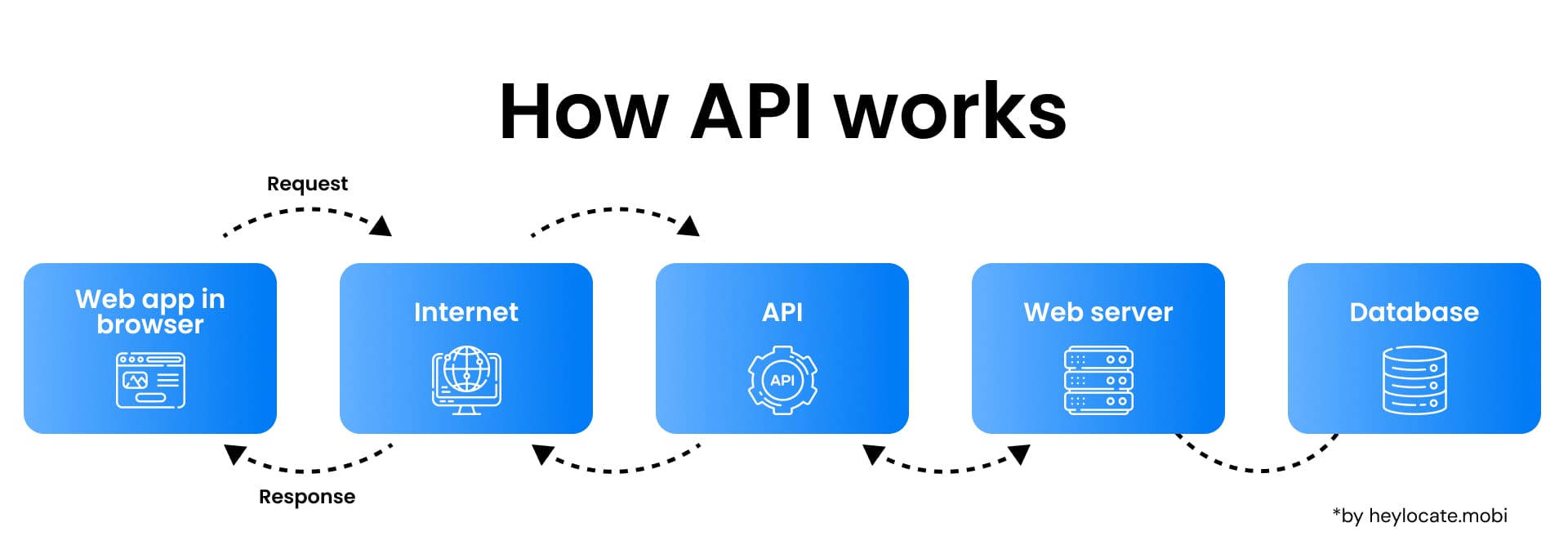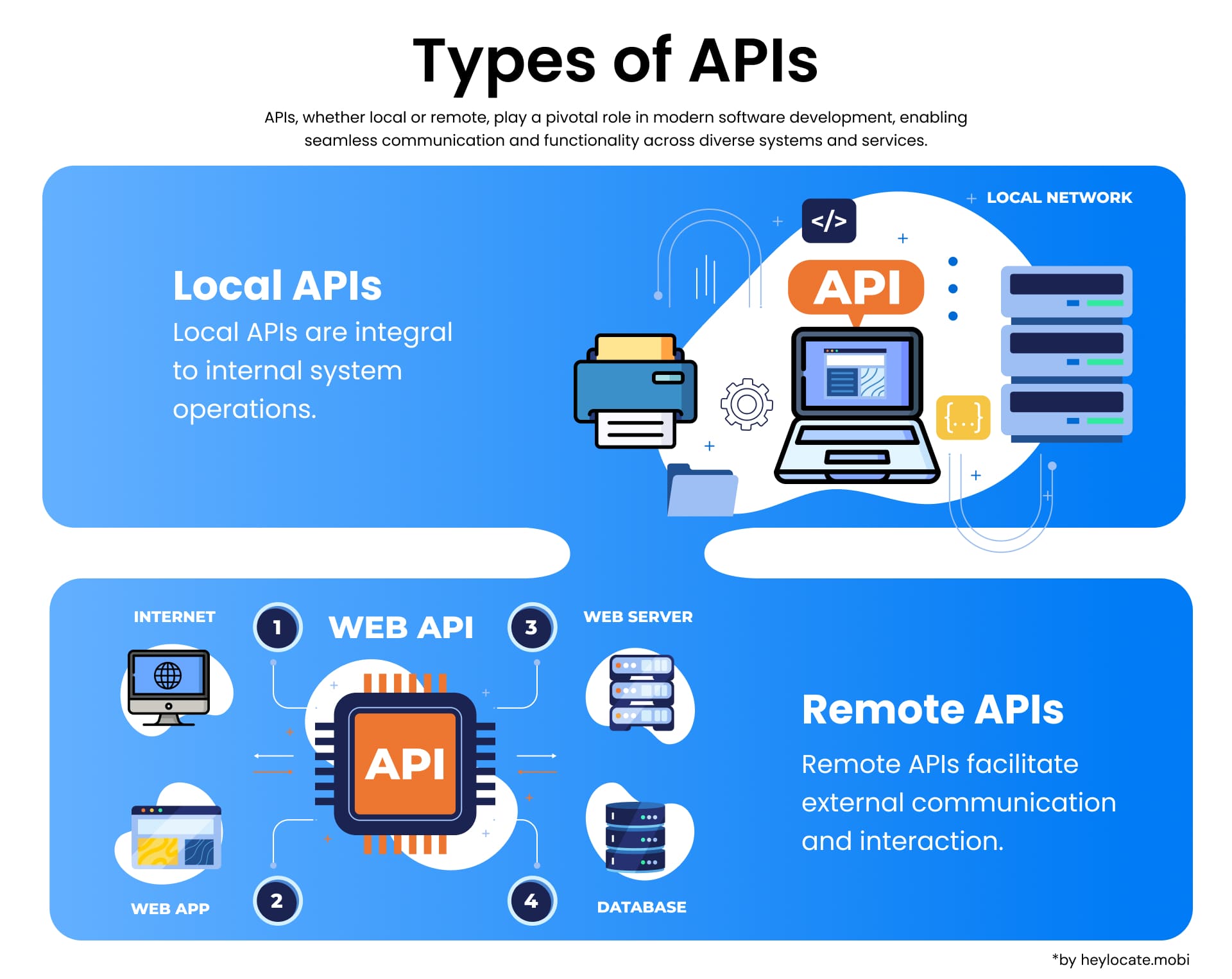Application Programming Interface (API)
What is an API?
An API, short for Application Programming Interface, serves as a standardized mediator within the software domain. It facilitates communication between different software components, including applications, libraries, and operating systems, by establishing protocols and guidelines for seamless data sharing.

Components of an API:
- Specifications act as the regulatory framework dictating the functioning of an API. They encompass aspects such as data formats, communication protocols, and authentication mechanisms.
- Implementations refer to the tangible code responsible for executing communication processes within an API. This code functions as the operational engine, executing functions, methods, and procedures to enable seamless interaction.
The Role of APIs in Software Development
APIs play a crucial role in simplifying app development processes by providing developers access to existing functionalities and services. By leveraging APIs, developers can focus on crafting their app’s logic without the need to recreate fundamental components, thereby streamlining the development workflow.
Types of APIs
APIs can be categorized into two primary types:

Local APIs
Local APIs are integrated within a system and include:
- Software Libraries: Collections of prebuilt functions and modules designed to address common programming challenges, accompanied by their own APIs for easy integration.
- Frameworks: Comprehensive toolsets equipped with libraries, tools, and conventions tailored for developing specific types of applications, supplemented with their respective APIs.
- Operating Systems: OS feature APIs enabling applications to access hardware and system resources, facilitating tasks like file operations, networking, and process management.
Remote APIs
Remote APIs extend application functionalities by enabling interaction with external services or resources hosted on distant servers. These APIs utilize network protocols such as TCP/IP or HTTP to establish communication between the client application and remote servers.
- Web APIs: A subset of remote APIs, web APIs, also known as RESTful APIs, leverage the capabilities of the internet and the Hypertext Transfer Protocol (HTTP) to facilitate communication between applications.
References
- Reddy, Martin (2011). API Design for C++. Elsevier Science. p. 1. ISBN 9780123850041
- Wood, Laura (2021-08-25). “Global Cloud Microservices Market (2021 to 2026)” businesswire.com. Retrieved 2022-03-29
- Clarke, Steven (2004). “Measuring API Usability”. Dr. Dobb’s
- Wikipedia API API: Main page – MediaWiki
- Set of guidelines from Microsoft for designing high-quality APIs